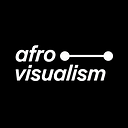Artists That Inspired Afrovisualism
If you have been following Afrovisualism for a while now, you may have noticed my tagline “Black Visual Culture. Blackness in a Visual Continuum.”
Afrovisualism is my platform on the subject of black visual culture and the concept of black visuality.
What is Black Visual Culture?
Visual culture is how visual media — fine art, cinema, the Internet, advertising, performance, photography, television — impacts everyday life.
Black Visual Culture is observing the visual history of African Americans regarding understanding contemporary culture.
What Is Black Visuality?
“Visuality is an old word for an old project. It is not a trendy theory-word meaning the totality of all visual images and devices, but it is, in fact, an early nineteenth-century term, meaning the visualization of history… This practice is created from information, images, and ideas” — Nicholas Mirzoeff
Visuality in black history and culture has been discussed from the academic perspective.
My blog seeks to expound on black visuality from the perspective of visual media, music, and pop culture.
A continuum is something that keeps on going, changing slowly over time or something that changes in character gradually or in very slight stages without any clear dividing points.
The artists that inspired me, have multidisciplinary themes about blackness in their work, specifically having images going between the realms of visual art and popular culture.
Jenn Nkiru
Jenn Nkiru is a director who studied under Haile Gerima. Nkiru found her artistic voice through film using the visual aesthetics of the Black Arts Movement, Pan Africanism, and Afrofuturism.
She is known for her work as a second unit director on The Carters “Apeshit” and director of Kamasi Washington’s “Hubtones”, showcases her idea of black universality, that blackness can be in places not otherwise seen in but universally felt. She has also directed her own films such as Rebirth is Necessary and Black to Techno.
Arthur Jafa
Arthur Jafa, who was a cinematographer on Spike Lee’s Crooklyn and Clockers, took his directorial skills to the art world and music industry. Jafa uses his take on the visuality of black cinema through his concept of “Black Visual Intonation” to connect with the soulful nature associated with black music.
Jafa has created his visual language in the creation of his visual archive in his films Apex, and Love Is A Message, The Message is Death. Using this method, he has translated the aesthetics of black life into a certain notion of what black film is. He has also directed music videos for Solange’s Don’t Touch My Hair and JAY-Z’s 4:44.
Sun Ra
Born as Herman Poole Blount, who later became Sun Ra resulting from a vision he had. As a musician and philosopher, he pre-dated the concept Afrofuturism through his experimental jazz and theories of the world. He formed the Sun Ra Arkestra, and produced and starred in films Space is The Place he was a key factor in the black artistry as a whole.
Rammellzee
Rammellzee was a graffiti writer, visual-performance artist, and emcee. His name is from his mathematical equation that he calls “The RAMM: ΣLL: ZΣΣ” He appeared in the 1983 film WildStyle. As an artist, he designed his characters that became wearable art and sculptures from junk found in scrap yards. He was also a friend of Jean Michel Basquiat. Like Sun Ra and Basquiat, Rammellzee, also pre-dated Afrofuturism in terms of his artistic perspective. He was a cultural researcher and had invented his language called “Ikonoclast Pamzerism” which led to the development of his visual language of graffiti called “Gothic Futurism”.
Follow @afrovisualism on Instagram, Twitter, Medium, and Facebook.
